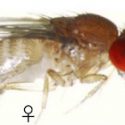Sustainable nanotechnology center lands new $20 million contract
The Center for Sustainable Nanotechnology, a multi-institutional research center based at the University of Wisconsin–Madison, has inked a new contract with the National Science Foundation (NSF) that will provide nearly $20 million in support over the next five years.
Directed by UW–Madison chemistry Professor Robert Hamers, the center focuses on the molecular mechanisms by which nanoparticles interact with biological systems.

Robert Hamers
Nanotechnology involves the use of materials at the smallest scale, including the manipulation of individual atoms and molecules. Products that use nanoscale materials range from beer bottles and car wax to solar cells and electric and hybrid car batteries. If you read your books on a Kindle, a semiconducting material manufactured at the nanoscale underpins the high-resolution screen.
While there are already hundreds of products that use nanomaterials in various ways, much remains unknown about how these modern materials and the tiny particles they are composed of interact with the environment and living things.
“The purpose of the center is to explore how we can make sure these nanotechnologies come to fruition with little or no environmental impact,” explains Hamers. “We’re looking at nanoparticles in emerging technologies.”
In addition to UW–Madison, scientists from UW-Milwaukee, the University of Minnesota, the University of Illinois, Northwestern University and the Pacific Northwest National Laboratory have been involved in the center’s first phase of research. Joining the center for the next five-year phase are Tuskegee University, Johns Hopkins University, the University of Iowa, Augsburg College, Georgia Tech and the University of Maryland, Baltimore County.
“The purpose of the center is to explore how we can make sure these nanotechnologies come to fruition with little or no environmental impact.”
Robert Hamers
At UW–Madison, Hamers leads efforts in synthesis and molecular characterization of nanomaterials. Soil science Professor Joel Pedersen and chemistry Professor Qiang Cui lead groups exploring the biological and computational aspects of how nanomaterials affect life.
Much remains to be learned about how nanoparticles affect the environment and the multitude of organisms — from bacteria to plants, animals and people — that may be exposed to them.
“Some of the big questions we’re asking are: How is this going to impact bacteria and other organisms in the environment? What do these particles do? How do they interact with organisms?” says Hamers.
For instance, bacteria, the vast majority of which are beneficial or benign organisms, tend to be “sticky” and nanoparticles might cling to the microorganisms and have unintended biological effects.
“There are many different mechanisms by which these particles can do things,” Hamers adds. “The challenge is we don’t know what these nanoparticles do if they’re released into the environment.”
“There are many different mechanisms by which these particles can do things. The challenge is we don’t know what these nanoparticles do if they’re released into the environment.”
Robert Hamers
To get at the challenge, Hamers and his UW–Madison colleagues are drilling down to investigate the molecular-level chemical and physical principles that dictate how nanoparticles interact with living things.
Pedersen’s group, for example, is studying the complexities of how nanoparticles interact with cells and, in particular, their surface membranes.
“To enter a cell, a nanoparticle has to interact with a membrane,” notes Pedersen. “The simplest thing that can happen is the particle sticks to the cell. But it might cause toxicity or make a hole in the membrane.”
Pedersen’s group can make model cell membranes in the lab using the same lipids and proteins that are the building blocks of nature’s cells. By exposing the lab-made membranes to nanomaterials now used commercially, Pedersen and his colleagues can see how the membrane-particle interaction unfolds at the molecular level — the scale necessary to begin to understand the biological effects of the particles.
Such studies, Hamers argues, promise a science-based understanding that can help ensure the technology leaves a minimal environmental footprint by identifying issues before they manifest themselves in the manufacturing, use or recycling of products that contain nanotechnology-inspired materials.
To help fulfill that part of the mission, the center has established working relationships with several companies to conduct research on materials in the very early stages of development.
“We’re taking a look-ahead view. We’re trying to get into the technological design cycle,” Hamers says. “The idea is to use scientific understanding to develop a predictive ability to guide technology and guide people who are designing and using these materials.”
Tags: biology, chemistry, federal relations, nanotechnology


